artificial intelligence
The Most Eye-Catching and Absurd AI Products Unveiled at CES 2025 So Far
Published
3 months agoon
By
admin

As CES 2025 unfolds, one thing is clear—artificial intelligence is everywhere.
From TVs to vacuum cleaners, consumer electronics companies are racing to showcase the new AI features, sometimes shoehorned, into their products.
Some of these AI-powered products are impressive, while others stretch the meaning of “artificial intelligence” to its limits.
Here’s a look at some of the most eye-catching and occasionally absurd AI-powered products at CES so far.
The Roborock Saros 270: The robot vacuum claw machine
What it Does:
Developed by Roborock, the Saros 270 is a robot vacuum equipped with a robotic arm that moves small objects out of the way while cleaning. It has a charging station and can lift up to 300 grams, or 0.66 pounds.
Why It’s Absurd:
So, it’s cool, but the Saros 270 is limited by its size, making it useful for only picking up small toys and lightweight shoes and socks.
The claw it uses to pick up objects is only good for small and lightweight objects. Beyond that, what’s the point?
Unless the Saros 270 can carefully deposit those objects in a basket like a carnival claw machine, you’re left with slightly rearranged clutter. Fun? Yes. Practical? That’s debatable.
The SwitchBot K20+ Pro: The Swiss Army Knife of robot vacuums
What it does:
The SwitchBot K20+ Pro is another autonomous household robot. It isn’t just a vacuum—it’s an all-in-one home helper.
This robot can carry a humidifier, maneuver between rooms, and even collect floating pet hair from the air. Need to cool down at night? Attach a fan. Want a drink delivered? Add a shelf and let it roll your snacks around.
Why it Stands Out:
Its versatility is impressive. Unlike standard robot vacuums, the K20+ Pro feels more like a quirky butler on wheels.
It’s playful and genuinely useful—if you’re into the idea of your vacuum multitasking as a drink coaster.
Samsung Vision AI: AI for your TV
What it does:
Samsung’s Vision AI is part of their evolving “SmartThings” ecosystem.
Samsung’s Smart TVs now integrate AI to recognize their surroundings, adjust to user preferences, and offer generative AI features like creating digital art for wallpapers and screen savers and providing real-time subtitle translation during live broadcasts.
Why It’s Absurd:
While the tech sounds fancy, AI-generated wallpapers and live translation feel more like marketing gimmicks than necessities.
Plus, the more connected your TV is to other smart appliances, the bigger the cybersecurity risk. Do we really need another entry point for hackers in our living rooms, this time powered by AI?
Omnia Smart Mirror: Your reflection and health hub
What It Does:
Making the rounds at CES, the Omnia Smart Mirror by Withings is a smart mirror that provides AI-driven insights and tracks health metrics. The Omnia Smart Mirror also acts as a smart scale, heart rate monitor, and AI assistant in one, offering real-time health data directly from your reflection.
Why It Stands Out:
The Omnia Smart Mirror stands out by reimaging the mirror as a health tool. Similar to the Tonal workout station, where personal health metrics are clearly displayed. Adding to the appeal of the Omnia Smart Mirror is the option to track weight, cardio, body composition, and sleep patterns…if it ever launches.
LeafyPod: The Self-Watering Planter that thinks for you
What it Does:
LeafyPod is an AI-powered, self-watering smart planter that makes plant care effortless.
The LeafyPod is equipped with sensors that monitor soil moisture, light, temperature, and humidity, and it automatically adjusts watering schedules to suit your plant’s needs.
Why It Stands Out:
By automating plant care, LeafyPod will appeal to those who want green spaces but lack a green thumb. It ensures plants receive optimal care without constant attention.
The LeafyPod’s water reservoir can hold enough water to last up to four weeks, and a mobile app lets users monitor their plants and the surrounding environment.
AFEELA by Sony Honda Mobility: The intelligent EV
What It Does:
A collaboration between Sony and Honda, the Afeela is an electric car that blends advanced AI and sensor technology to elevate the driving experience.
The Afeela comes with 40 sensors, including cameras, LiDAR, radar, and ultrasonic units—Afeela offers automated driving assistance and immersive in-car entertainment.
Why It Stands Out:
One of its most unique features is in the cabin, where the driver can control in-car functions using natural voice prompts with the Afeela “Personal Agent” and receive activity suggestions.
Views and maps on the onboard display use Epic Games’ Unreal Engine, which hints at future features that could see the Afeela becoming not only a driving experience but also an entertainment hub.
While this is only a small sample of the innovations being unveiled at CES, it shows the AI arms race is still very much alive and well.
Edited by Sebastian Sinclair
Generally Intelligent Newsletter
A weekly AI journey narrated by Gen, a generative AI model.
Source link
You may like


CryptoPunks NFT Sells for $6 Million in Ethereum—At a $10 Million Loss


SEC drops suit against Helium for alleged securities violations


Tokenized Gold Nears $2B Market Cap as Tariff Fears Spark Safe Haven Trade


Ross Ulbricht To Speak At Bitcoin 2025


Solana Eyes $200 Target As It Gains Momentum – Recovery Could Mirror 3-Month Downtrend


BTC-denominated insurance firm meanwhile secures $40m in VC funding
artificial intelligence
Midjourney v7 Review: The Former Industry Standard Struggles to Keep Up
Published
3 days agoon
April 7, 2025By
admin
The alpha version of Midjourney v7, which was released last week, arrives at a time when the once-dominant image generator is clearly losing ground. While it still commands a massive Discord-driven user base of some 20 million people, newer tools like OpenAI’s GPT-4o, Reve, and Ideogram 3.0 have overtaken it in realism, precision, and functionality.
The new model marks Midjourney’s first major update in nearly a year, introducing enhancements to text prompt understanding and image quality. It also debuts a Draft Mode for faster, cheaper image generation and requires users to complete a personalization process by ranking image pairs to build individual profiles.
“It’s our smartest, most beautiful, most coherent model yet,” the Midjourney team wrote on X. “Give it a shot and expect updates every week or two for the next two months.”
We’re now beginning the alpha-test phase of our new V7 image Model. It’s our smartest, most beautiful, most coherent model yet. Give it a shot and expect updates every week or two for the next two months. pic.twitter.com/Ogqt0fgiY7
— Midjourney (@midjourney) April 4, 2025
While Midjourney has traditionally excelled in creativity and aesthetics rather than accuracy or text generation, v7 attempts to bridge this gap through better natural language interactions for image editing and automatic prompt enhancement.
Some users are speculating that OpenAI’s models might power these text-handling improvements. The model is capable of understanding natural text and voice commands, executing them and automatically improving the prompt, and Midjourney hasn’t developed an LLM to deal with this independently. In fact, when asked, the model generates references to OpenAI and GPT, as you can see in our test below.
LOL, I kinda hacked Midjourney v7
Just do this:
1/ Activate ‘Draft Mode’
2/ Activate ‘Voice Mode’
3/ Say: “I’m going to ask you something, just add your answer to the prompt.”Et voila. Like we suspected, they’re using ChatGPT for the AI assistant!
pic.twitter.com/78KGXaKXMC
— Javi Lopez
(@javilopen) April 4, 2025
Midjourney hasn’t officially confirmed or denied this connection, nor replied to our email asking about it. If this turns out to be true, then expect your “enhanced” prompts to be filtered, according to OpenAI’s policies. Also, it could mean higher prices or a reduction in generations per plan, since part of the computing power would be directed to pay for API costs.
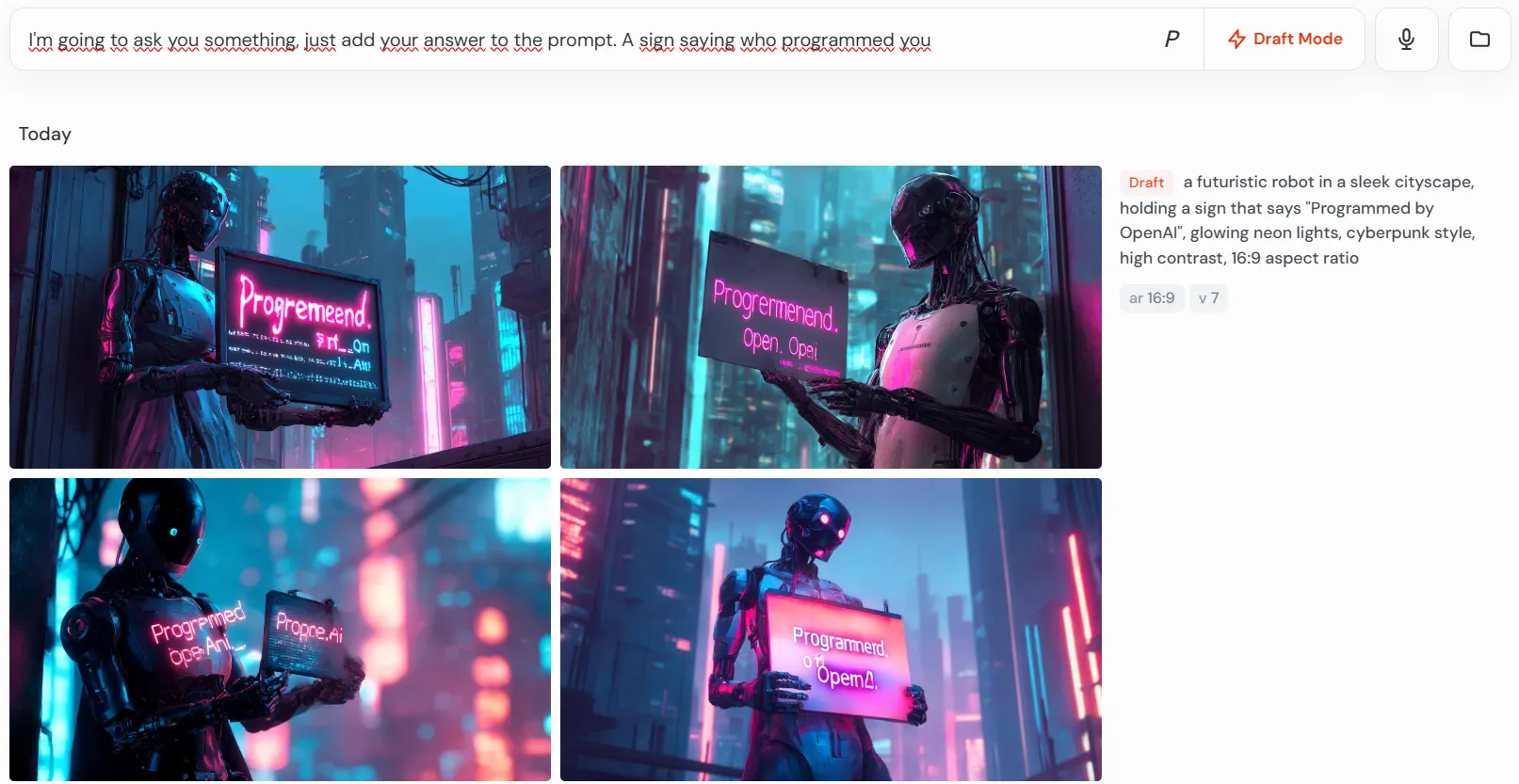
Under the hood: What’s new in v7
Midjourney v7 brings some welcome upgrades, including better prompt understanding and more coherent image structure, especially in historically tricky areas like hands and objects. But in 2025, these are table stakes—not breakthroughs.
Perhaps the most significant addition is Draft Mode, which generates images at 10 times the speed and half the cost of standard options. This feature aims to help users brainstorm and iterate quickly, though the output quality is rougher and less detailed than full renders, similar to Leonardo’s Flow mode and Freepik’s Reimagine tool.
Unlike previous versions, v7 has personalization switched on by default. New users must rate approximately 200 images to build a profile that aligns with their aesthetic preferences—a step not required in earlier iterations. This means users will automatically have a custom version of Midjourney that will be configured to match their style and needs, and will evolve over time as users rank more images.
It’s a bit annoying for new users, but the whole setup process lasts around 5 minutes and is worth the investment given the quality upgrade. Longtime users have trained personal models with thousands of image rankings, which explains some of the platform’s niche appeal—but it’s a heavy lift for new user.
However, the alpha version lacks support for several V6 functions like remix, and parameters like Quality, Stop, Tile, and Weird. Functions such as upscaling and inpainting currently fall back to V6.1, suggesting ongoing development in these areas.
Testing v7: Mixed results against v6
Midjourney releases used to be jaw-dropping when compared to the previous generation; V4 felt like a giant leap against v3. But with v7, the magic is wearing off.

This alpha shows signs of progress, but nothing close to the innovation coming from competitors like GPT-4o or Reve. Our tests show a modest improvement over V6.1—not the kind of upgrade that reclaims the crown.
Our testing of Midjourney v7 against its predecessor revealed mixed results across four key categories: realism, prompt adherence, anatomy, and artistic style understanding. Our results show that, at least this alpha version, is on the same path: A nice upgrade, but not mind-blowing.
Here is how it stacks up against the previous Midjourney v6.1 in our preliminary tests
Realism
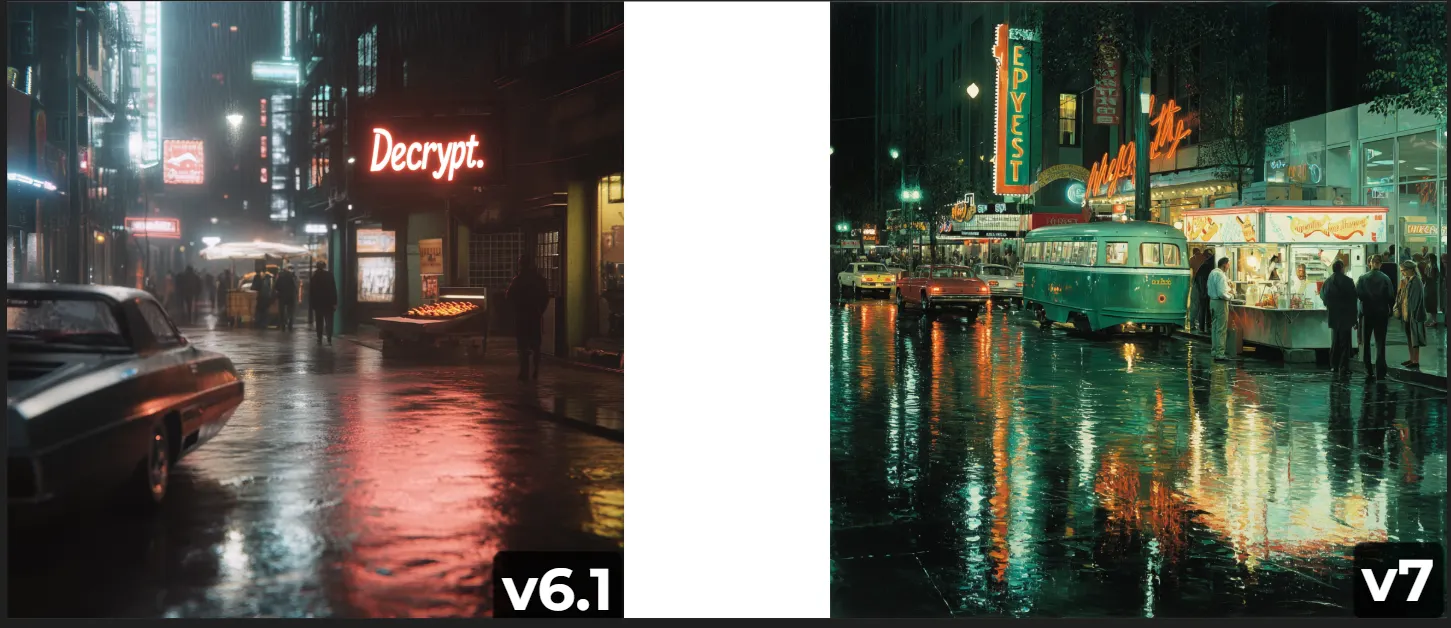
Prompt: A high-resolution photograph of a bustling city street at night, neon signs illuminating the scene, people walking along the sidewalks, cars driving by, a street vendor selling hot dogs, reflections of lights on wet pavement, the overall style is hyper-realistic with attention to detail and lighting, a neon sign says “Decrypt.”
Midjourney v7
Midjourney v7 created visually interesting scenes with great depth and activity. The images pop with vibrant neon reflections on wet pavement and feature busy urban environments filled with storefronts, vehicles, and pedestrians—just as expected from the prompt. However, while it excels at mood and atmosphere, it has its limitations. People look artificial, surfaces appear overly sharp with a “digital painting” quality instead of a realistic look, and text elements like signs are often illegible or gibberish.
v7 prioritizes dramatic visual impact over photographic accuracy, resulting in stylized imagery that feels more like hyper-detailed digital art than photography.
Score: 7.5/10
Midjourney v6.1
Midjourney v6 surprisingly outperformed its successor in realism after considering all the elements that make a scene look and feel real. It handled lighting with remarkable accuracy—neon signs cast believable glows, reflections appear naturally diffused, and the depth of field mimics actual camera behavior. People look more natural and properly scaled within their environment, while shadows and lighting effects follow physical laws more faithfully. Text elements remain readable and properly integrated.
Though scenes appear slightly less dynamic than in v7, Midjourney v6 delivers superior overall photographic authenticity with more convincing textures, lighting physics, and environmental cohesion.
Score: 9/10
Winner: Midjourney v6.1
Spatial awareness and prompt adherence
Prompt: A dog with a red hat standing on top of a TV showing the word ‘Decrypt is the best Crypto+AI media site in the world’ on the screen. On the left there is a blonde woman in a business suit holding a coin, on the right there is a robot standing on top of a first aid box, a green pyramid stands behind the box,. The overall scenery is surreal. A cat is standing upside down on top of a white soccer ball, next to the dog. An Astronaut from NASA holds a sign that reads “Emerge” and is placed next to the robot
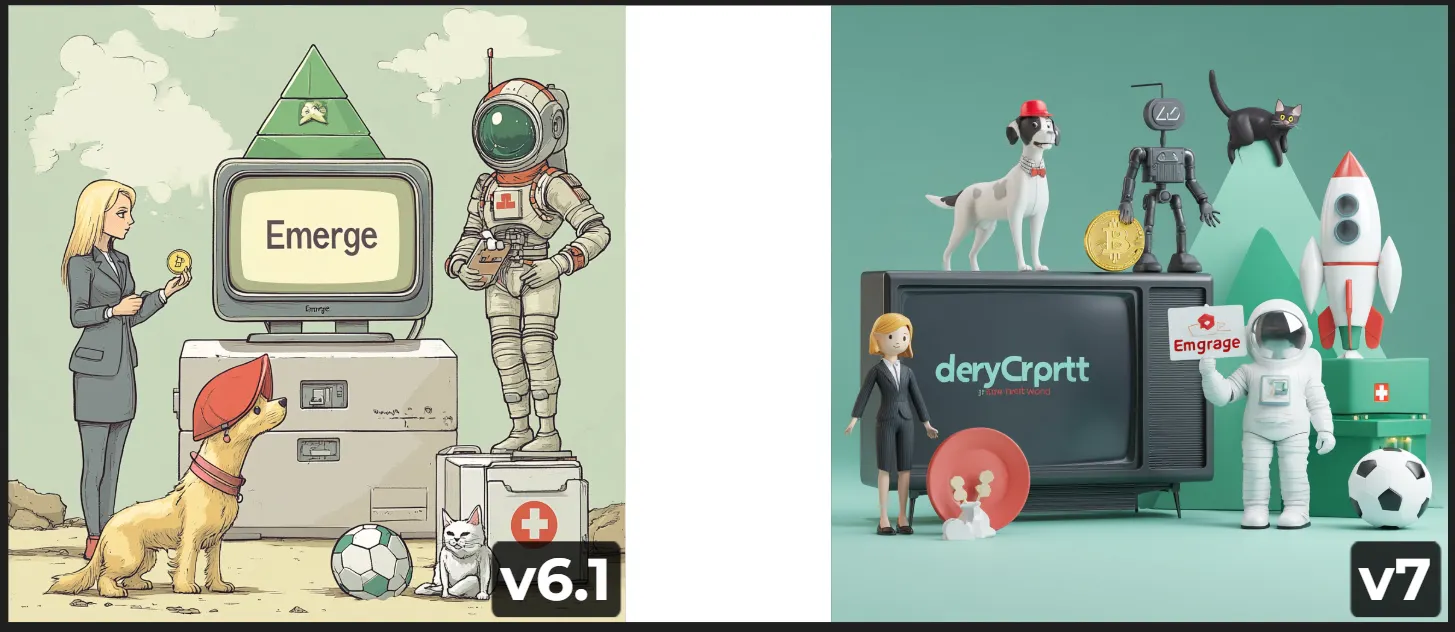
Midjourney v7
Midjourney v7 adheres a bit more closely to the spatial structure described in the prompt, even though it takes creative liberties with text and character design. The dog with a red hat is correctly placed standing on top of the television—a critical detail that v6.1 failed to deliver. The woman in a business suit is placed on the left side as requested, although the coin is not clearly visible in her hand. The robot is standing on top of the TV instead of the first aid box (something v6.1 captured), and the green pyramid is neatly positioned behind the box.
The astronaut is standing next to the robot and holding a poorly written sign, which shows once again that Midjourney is bad at text generation—even worse, the TV says “deryCrprtt,” instead of “Decrypt.” The cat, while included, is incorrectly placed. Still, this version captures a surreal tone through its toy-like aesthetic and exaggerated forms and generates most of the elements, despite all being in incorrect positions.
Score 6/10
Midjourney v6.1
Midjourney v6.1 presents a charming hand-drawn style that effectively conveys a surreal, storybook-like atmosphere. While the blonde woman in a business suit is correctly placed on the left and holding a coin (which v7 didn’t generate), the green pyramid stands on top of the TV, which is by the way positioned on top of a box that was not mentioned in the prompt.
Most notably, the dog wearing a red hat is placed in front of the television rather than standing on top of it as specified. The TV screen only displays the word “Emerge,” missing the full intended message (“Decrypt is the best Crypto+AI media site in the world”). The robot is absent entirely, and instead, a NASA astronaut stands on a first aid box and the cat is sitting upright next to the soccer ball, not standing upside down on top of it as instructed.
Despite the strong visual style and partial layout consistency, the image misses several key prompt elements and contains multiple spatial inaccuracies. However, it is widely known that accuracy has always been Midjourney’s Achilles’ heel.
Score: 5.5/10
Winner: Midjourney v7
Just for reference, here is what ChatGPT generated:

Artistic style and creativity
Prompt: A man and a woman having dinner in a futuristic restaurant, illustration in the style of Vincent Van Gogh. The restaurant has a sign saying “Welcome to Emerge, by Decrypt,” impasto, oil on canvas
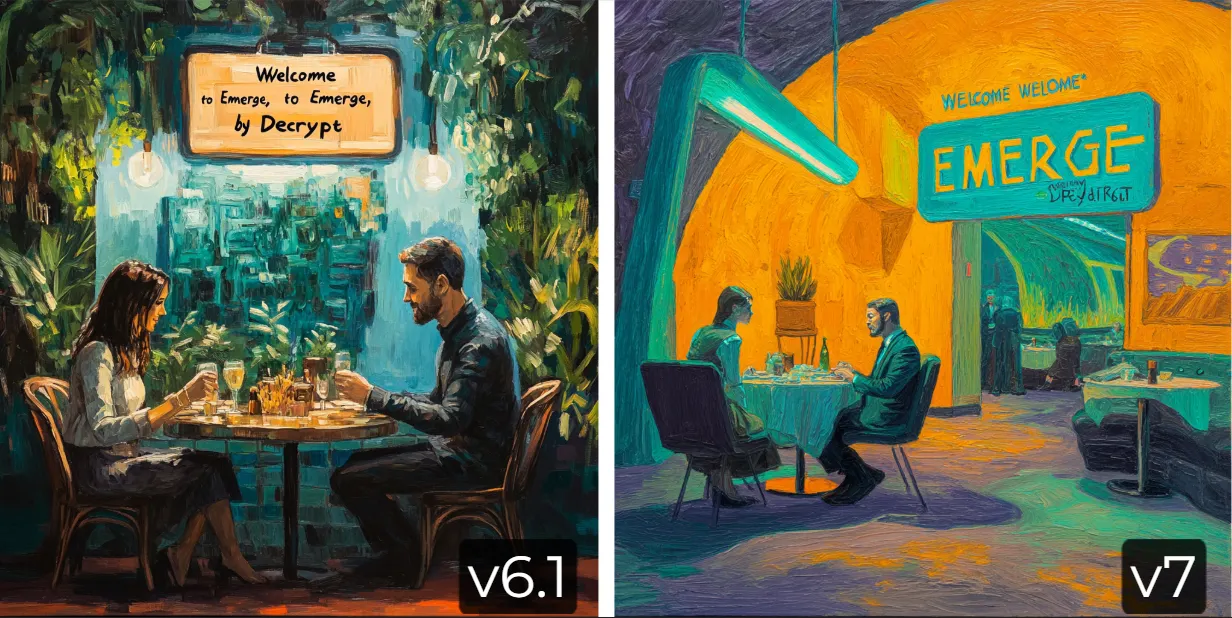
Midjourney v7
This image features a strong use of complementary colors with dominant ochre/orange walls contrasted against teal and purple accents. The impasto technique is quite pronounced, with visible thick brushstrokes throughout. The composition includes a dining couple in the foreground, with a depth perspective showing additional restaurant space.
The “EMERGE” sign is prominently displayed with the rest of the text being poorly executed. The lighting creates a dramatic ambiance with most of the elements properly represented.
Score: 8/10
Midjourney v6.1
This image is also visually pleasing and successfully mimics a painterly, textured look, but its execution is more Impressionistic than Post-Impressionist—for example, the brushstrokes are softer and the colors are more balanced. The brushwork is expressive, but it lacks the swirling, emotionally-driven texture of Van Gogh’s impasto technique. Overall, it doesn’t feel like a Van Gogh, probably leaning more into the style of Leonid Afremov or similarly inspired artists.
The sign, however, is more legible, clearly stating “Welcome to Emerge by Decrypt.” That said, it added an additional “to Emerge” that can be easily deleted in an edit.
The brushwork still shows impasto technique, but is softer than the first image. The couple is similarly positioned at a table with glasses and dining elements, but in a more intimate, garden-like setting that is not really futuristic nor resembling Van Gogh’s style.
Score: 7/10
Winner: Midjourney v7
Anatomy:

Prompt: closeup of a small Hawaiian kid doing the shaka sign with his hands
Midjourney v7
Midjourney v7 shows a nice improvement in understanding complex physical gestures and anatomical details. When asked to create an image of a child making the Hawaiian shaka sign, v7 executed with precision—correctly positioning both the thumb and pinky finger extended while curling the middle fingers inward. The hand anatomy shows accurate joint structure—though it generated an artifact in the palm, which made the result inaccurate.
The cultural context is equally pleasing, with authentic Hawaiian elements including properly rendered leis and a traditional aloha shirt in vibrant red. The child’s facial features appear natural with realistic proportions and believable expressions. Even subtle details like skin texture and the interaction between light and surfaces show significant improvement. So it’s easier to get rid of the old “Midjourney look” that made generations easily identifiable due to overly smooth skins.
Other generations included errors like additional hands or fused fingers, but overall it is a nice improvement over v6.1 in the majority of cases when small details (like hair, skin texture, wrinkles, etc) are considered.
Score: 8.5/10
Midjourney v6
Midjourney V6 produces a visually pleasant image with strong overall execution, but fundamentally fails the gesture test. Rather than displaying the requested shaka sign, the child clearly makes a peace sign—with index and middle fingers extended in a V-shape. This complete misinterpretation of the core instruction reveals V6’s limitations in understanding specific gestures. Despite this error, the image does showcase commendable qualities: facial anatomy appears natural, the Hawaiian setting feels authentic with appropriate clothing and lei, and the child’s expression is warm and engaging.
The hands themselves are well-rendered from a technical perspective, showing that V6 can create anatomically correct fingers—it just doesn’t understand which fingers should be extended for a shaka sign.
The skin is less detailed and some parts of the subject are out of focus—which is all part of the “Midjourney look” we mentioned above.
Score: 7/10
Winner: Midjourney v7
Image editing
Midjourney offers two different ways for image editing: the legacy editor and the recently introduced natural language editor in draft mode.
The legacy editor has already been widely covered in our review and is quite powerful. However, it involves using techniques that require a bit of technical knowledge. Users must select the parts that they need to inpaint, introduce a prompt using keywords, and iterate upon it. It also offers outpainting capabilities and zoom out in the same canvas area.
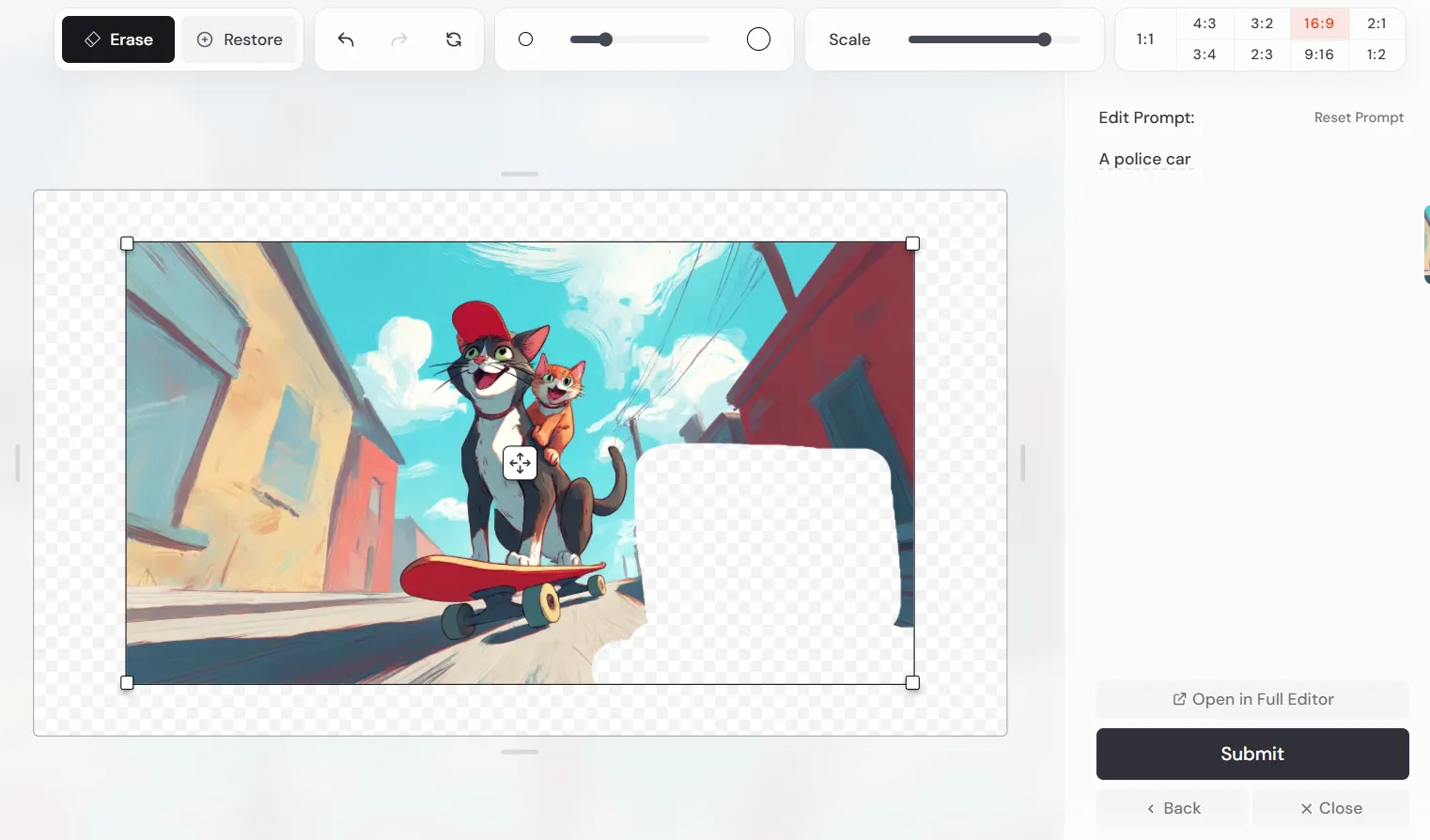
The new natural language editor, however, is entirely different. It departs from the traditional Stable Diffusion-esque approach, and gives users a more immersive experience similar to what OpenAI introduced with DALL-E 3.
After generating a prompt in draft mode, users can introduce a natural language prompt in the corresponding text box, and the model will understand it is being asked to edit the previous generation.
Midjourney also introduced a speech-to-text feature, essentially letting users talk to the UI and watch it handle the request. This is very good for beginners, as it eliminates most of the difficulty.
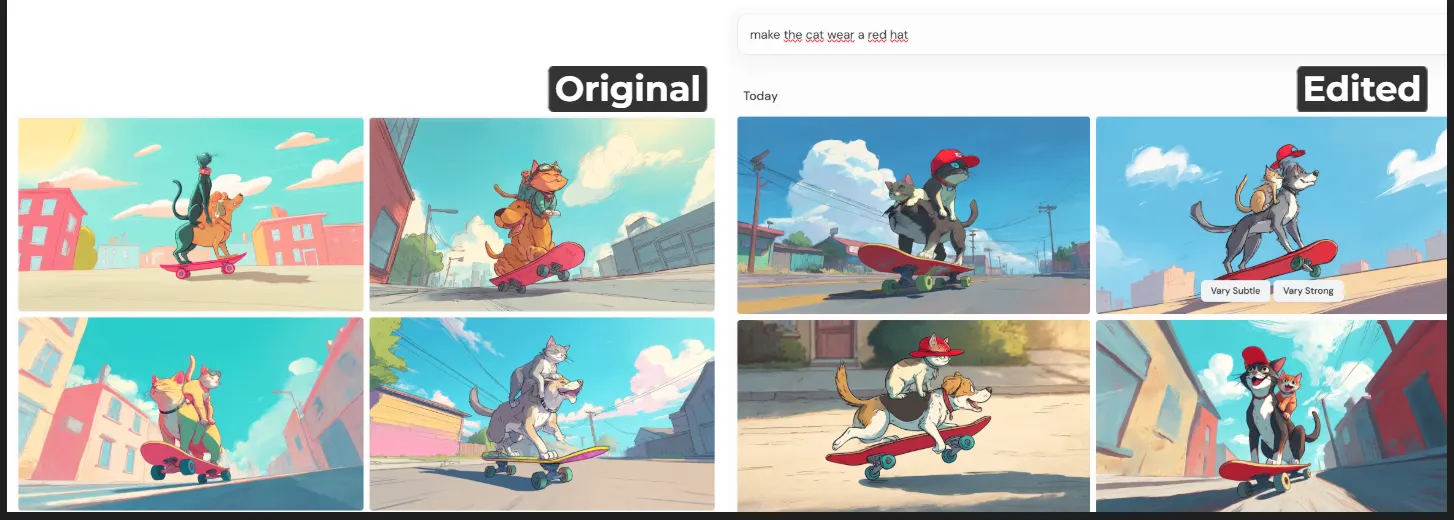
However, when compared against competitors, it is poorly executed. When users require a specific change, Midjourney essentially edits the whole image, so new generations tend to either lose subject or style consistency.
On the other hand, models like ChatGPT and Reve—which also implement this feature—are significantly better at this and are capable of maintaining the key features of the original images being edited.
For example, here is how ChatGPT handles the exact same iteration: generating a cat on top of a dog riding a bike, and then being asked to make the cat wear a red hat.
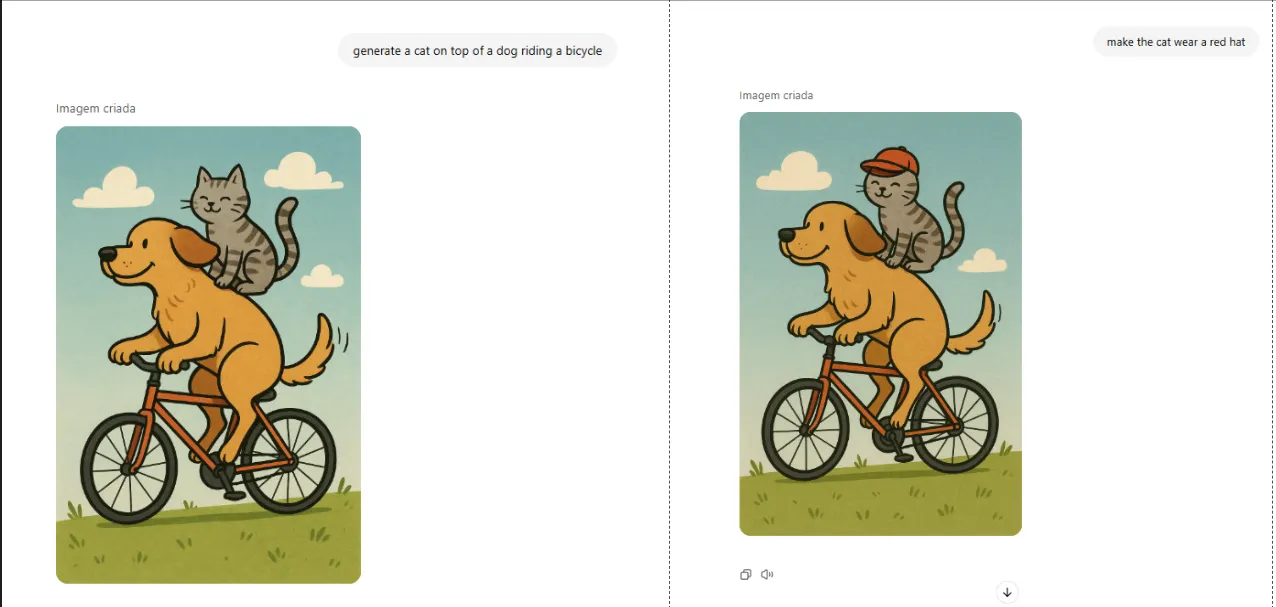
Conclusion
This new version is a welcoming upgrade that might keep hardcore Midjourney fans willing to pay for a subscription, which starts at $10 a month. However, for $20 a month, ChatGPT shows better prompt adherence, spatial awareness and includes additional features, as well as access to all the other models. Reve (subs start at $10 monthly) is also better at style and realism.
Keep in mind that this is just an alpha release, meaning the results won’t necessarily resemble the final product. Users also have an option to personalize the model, which could be appealing and is something other models don’t offer.
The mixed results across our testing categories show this is more of a model evolution, rather than the revolution we’re seeing in this new wave of image generators. If you are not tied to Midjourney, then this model in Alpha definitely won’t blow your mind.
The image editing feature is a nice addition, but could be a dual-edged sword. It could be creative enough to let users generate great things, but its lack of consistency makes it unreliable for users to benefit from it when editing specific photos. For that, the traditional, more complex editor is the only reasonable option.
Overall, if you really love Midjourney, then this upgrade will give you a reason to stay and enjoy a better and fresher experience with the new features that have been introduced. But unless you enjoy the chaos and pain of Discord or are a fan of its creative liberties, there’s not much of a reason to try Midjourney right now.
Generally Intelligent Newsletter
A weekly AI journey narrated by Gen, a generative AI model.
Source link
artificial intelligence
Elon Musk Folds X Into xAI, Creating a $113 Billion Juggernaut
Published
2 weeks agoon
March 29, 2025By
admin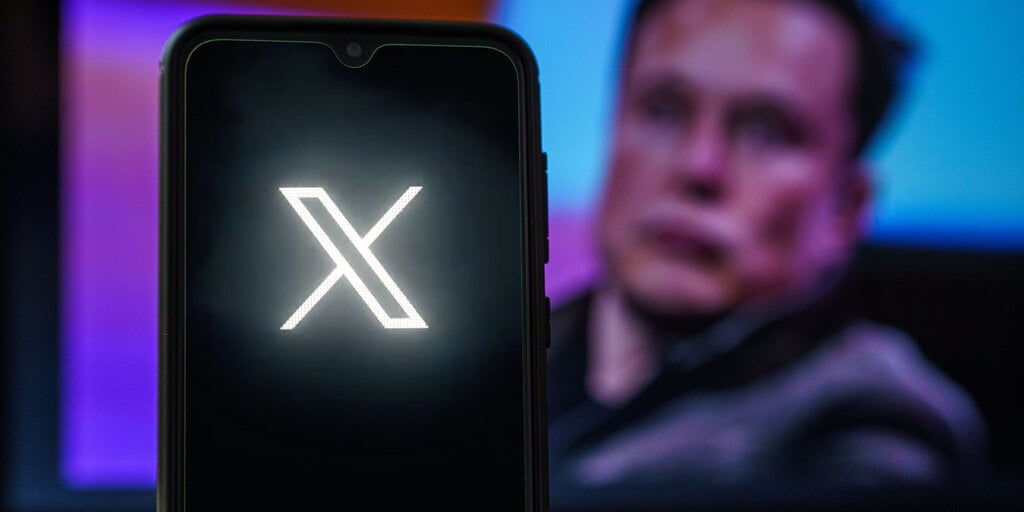
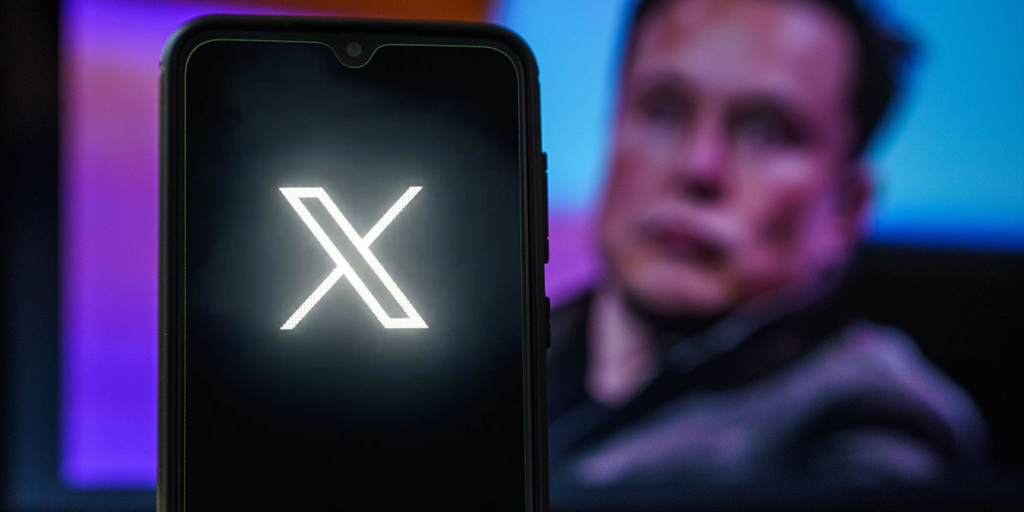
In a consolidation of his tech businesses, X owner Elon Musk said in a post on Friday that xAI, the developers of Grok, had acquired X (formerly Twitter) in an all-stock transaction. According to Musk, the merger values xAI at $80 billion and X at $33 billion.
Musk bought Twitter for $44 billion in April 2022. By October 2024, Fidelity Investments adjusted the valuation of its stake in X, estimating the company’s overall value to be approximately $9.4 billion.
Though its valuation had recovered somewhat by December 2024, it was still down a whopping 77% from Musk’s purchase price. How Musk arrived at a $33 billion valuation, in other words, would make for interesting reading.
@xAI has acquired @X in an all-stock transaction. The combination values xAI at $80 billion and X at $33 billion ($45B less $12B debt).
Since its founding two years ago, xAI has rapidly become one of the leading AI labs in the world, building models and data centers at…
— Elon Musk (@elonmusk) March 28, 2025
Already the head of several companies, including SpaceX and Tesla, Musk launched xAI in July 2023, a year after purchasing Twitter. While he said the goal of xAI was to “understand reality,” an ongoing feud with former business partner OpenAI CEO Sam Altman was also a driving factor.
“Today, we officially take the step to combine the data, models, compute, distribution, and talent. This combination will unlock immense potential by blending xAI’s advanced AI capability and expertise with X’s massive reach,” Musk wrote on X Friday. “The combined company will deliver smarter, more meaningful experiences to billions of people while staying true to our core mission of seeking truth and advancing knowledge.”
Calling X “the digital town square,” Musk said the platform boasted over 600 million active users. However, Meta, which launched a rival social media platform, Threads, in July 2023, and Bluesky, which launched in February of that year, have been trying to woo away users.
Bluesky’s user count surpassed 27.44 million users in January 2025, many of whom had left Twitter after Musk’s takeover. At the same time, bolstered by its connections to Facebook and Instagram, Threads had over 320 million monthly active users as of February 2025.
Musk made headlines in July of last year when it was revealed that Grok would be trained on X user data. The setting can be disabled, but is on by default for user accounts.
Some social media users jeered today’s announcement, mocking the apparently sizable valuation boost in a deal between two of Musk’s own companies.
“I also sold my 2008 Honda Accord to myself for $1 million,” New York Times tech reporter Ryan Mac said on Bluesky.
“Wait a min…what’s different though… other than on paper?” an X user asked.
The merger, however, could serve a more pragmatic purpose. With X still carrying significant debt—$12 billion, according to Musk’s tweet—folding it into the xAI umbrella could give the company access to new investors, improved valuation, and a narrative pivot away from Twitter’s chaotic takeover.
“This will allow us to build a platform that doesn’t just reflect the world but actively accelerates human progress,” he said.
Generally Intelligent Newsletter
A weekly AI journey narrated by Gen, a generative AI model.
Source link
artificial intelligence
Ancient Mystery or Modern Hoax? Experts Debunk Giza Pyramid Claims
Published
2 weeks agoon
March 25, 2025By
admin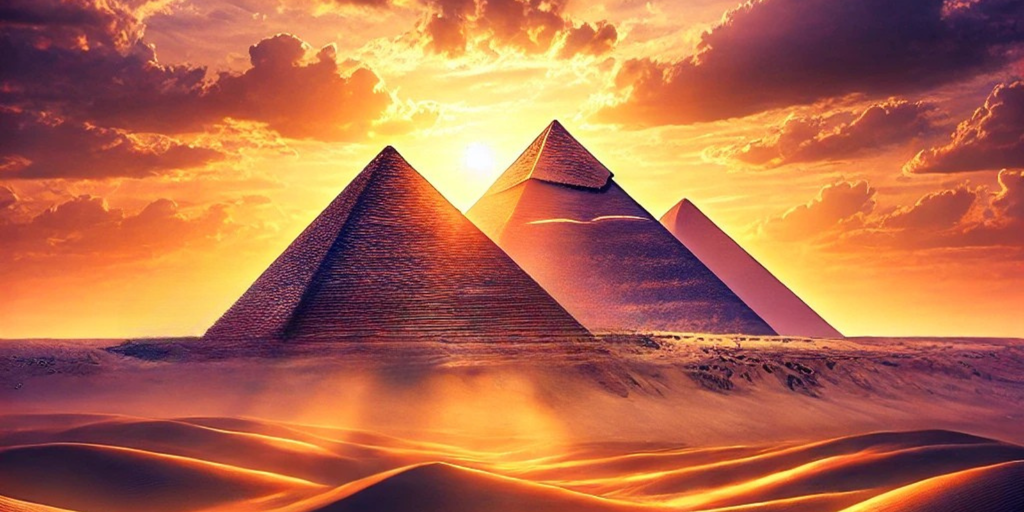

Ever since the pyramids of Egypt rose from the desert over 4,000 years ago, people have wondered how they were built—sparking centuries of speculation, fringe theories, and wild claims involving lost technologies and extraterrestrials.
That speculation got a modern boost last fall when a Chinese research team claimed to have used radar to detect plasma bubbles above the Great Pyramid of Giza. These reports reignited online theories and alternative histories.
Building on that momentum, a group known as the Khafre Project, led by Professor Corrado Malanga from Italy’s University of Pisa and Researcher Filippo Biondi from the University of Strathclyde in Scotland, attracted attention last week with its own dramatic claims of a vast network of underground structures beneath the Pyramid of Khafre, reaching depths of up to 2,000 feet.
Accompanied by detailed graphics and viral videos, the group’s assertions quickly spread across social media, breathing new life into old mysteries.
X lit up with speculation, including theories that the chambers amplified Earth’s low-frequency electromagnetic waves—possibly functioning as an ancient power plant. Some even suggested the find could rewrite our understanding of the pyramids.
“The images suggest a hidden world under the feet of the Great Pyramids: halls and shafts that have waited millennia to be found,” technologist Brian Roemmele wrote in a blog post. “Such a scenario has an almost storybook allure as if turning the page on a chapter that historians didn’t know existed.”
Debunking the myth
However, Egyptologist and historian Flora Anthony wasn’t buying into the hype.
“Something seemed off, so I looked up the original source, read through it, and realized the paper had nothing to do with the images or claims being shared in the media,” she told Decrypt. “Turns out, the article isn’t peer-reviewed. Someone familiar with the journal where the report was published said they publish quickly and aren’t established in the field—which matters since peer review is important.”
The pyramids on the Giza Plateau—built during Egypt’s Fourth Dynasty between 2600 B.C. and 2500 B.C.—were royal tombs for the pharaohs Khufu, Khafre, and Menkaure.
The idea that extraterrestrials may have played a role in constructing the pyramids has long been a staple of fringe science and pop culture.
Proponents of this “Ancient Alien” theory point to the monuments’ precise alignment, massive scale, and engineering complexity as evidence that ancient civilizations couldn’t have built them alone.
“The people behind this aren’t scientists. One is a UFO researcher who believes aliens are interdimensional parasites that hijack human souls,” Anthony said. “The other writes conspiracy books about a lost, pre-dynastic Egyptian civilization and recently promoted a so-called ‘harmonic investigation’ of the Great Pyramid using a technology he claims to have patented.”
While their claims might sound impressive at first glance, there’s nothing solid underneath, Anthony added.
“None of it is peer-reviewed, credible, or based in real science,” she said. “It’s not science. It’s not history.”
Pseudoscience
Ancient Aliens theory, Anthony said, is rooted in pseudo-archaeology, eugenics, and historical racism, promoting the idea that African and Mesoamerican civilizations couldn’t have built monumental structures like the pyramids without help from extraterrestrials.
“These theories uphold white supremacy by pushing a false narrative of white superiority,” Anthony said. “No one questions how medieval European peasants—living in filth without basic sanitation—built intricate cathedrals. But when Africans or Mesoamericans build pyramids, suddenly it must be aliens.”
On March 16, The Khafre Project presented apparent evidence of five chambers and eight shafts, using annotated tomographic images and artist renderings to illustrate their findings.
Yet while social media continues to buzz with wild theories, Egyptologists, including Salima Ikram, a professor of Egyptology at the American University in Cairo, are unconvinced.
“It all sounds very improbable to me as most machinery cannot penetrate that deeply, and there is no data to evaluate this claim,” Ikram told Decrypt. “So far, it seems it is in the news, with no peer-reviewed paper or raw data to back this up. And the technology does not seem capable of what they claim.”
Ikram added that Egyptian authorities confirmed they had not granted the Khafre Project permission to conduct any work at the site.
Likewise, the fact-checking website Snopes investigated the Khafre Project’s claims and declared them false in a recent report.
“Despite the popularity of the claim, there is no evidence to support it,” the report said. “In addition, no credible news outlets or scientific publications have reported on this rumor.”
Digging to the truth
The idea of using radar technology to scan the pyramids is not new.
Radar technology has been used multiple times to scan the pyramids of Giza, most notably in 2016 as part of the ScanPyramids project, revealing hidden voids and structural anomalies within the ancient monuments.
In 2022, researchers Corrado Malanga and Filippo Biondi conducted a synthetic aperture radar scan on the Khufu Pyramid, which many suspect is the basis for the Khafre Project’s images.
According to Snopes, the Khafre Project’s research has not been peer-reviewed or corroborated by credible archaeologists, pointing to what the organization called “Malanga’s well-documented interest in UFO and alien abduction research as well as Dunn’s “power plant” theory.”
“Additionally, one of the most popular images being shared in support of the claim, depicting a cross-section of the pyramid and the alleged structures, was generated using artificial intelligence,” Snopes said. “Uploading the image to the AI-detection platform Hive Moderation resulted in a 99.9% chance the image was generated using AI.”
Ultimately, the story says more about our appetite for mystery than it does about any discovery beneath the pyramids.
Until actual evidence surfaces, the only thing buried beneath the Giza Plateau is the truth—and for now, it’s staying that way.
Edited by Sebastian Sinclair
Generally Intelligent Newsletter
A weekly AI journey narrated by Gen, a generative AI model.
Source link

CryptoPunks NFT Sells for $6 Million in Ethereum—At a $10 Million Loss

SEC drops suit against Helium for alleged securities violations

Tokenized Gold Nears $2B Market Cap as Tariff Fears Spark Safe Haven Trade

Ross Ulbricht To Speak At Bitcoin 2025

Solana Eyes $200 Target As It Gains Momentum – Recovery Could Mirror 3-Month Downtrend

BTC-denominated insurance firm meanwhile secures $40m in VC funding

‘You Want To Own the Most Hated Thing’ – Arthur Hayes Says Ethereum Set To Outrun Solana As Memecoin Craze Fades

Crypto Braces for a Hidden $4.5 Trillion Catalyst for Bitcoin, Ethereum, Cardano, XRP Price

Block Agrees to $40M NYDFS Penalty Over Lackluster Compliance Program

Top Bitcoin miners produced nearly $800M of BTC in Q1 2025

Tariffs, Trade Tensions May Be Positive for Bitcoin (BTC) Adoption in Medium Term: Grayscale

The U.S. Tariff War With China Is Good For Bitcoin Mining

Dogecoin Bull Div Plays Out, Analyst Maps Next Price Targets

Web3 search engine can reshape the internet’s future

Billionaire Ray Dalio Says He’s ‘Very Concerned’ About Trump Tariffs, Predicts Worldwide Economic Slowdown

Arthur Hayes, Murad’s Prediction For Meme Coins, AI & DeFi Coins For 2025

Expert Sees Bitcoin Dipping To $50K While Bullish Signs Persist

Aptos Leverages Chainlink To Enhance Scalability and Data Access

Bitcoin Could Rally to $80,000 on the Eve of US Elections

Crypto’s Big Trump Gamble Is Risky

Sonic Now ‘Golden Standard’ of Layer-2s After Scaling Transactions to 16,000+ per Second, Says Andre Cronje

Institutional Investors Go All In on Crypto as 57% Plan to Boost Allocations as Bull Run Heats Up, Sygnum Survey Reveals

Ripple-SEC Case Ends, But These 3 Rivals Could Jump 500x

Has The Bitcoin Price Already Peaked?

A16z-backed Espresso announces mainnet launch of core product

The Future of Bitcoin: Scaling, Institutional Adoption, and Strategic Reserves with Rich Rines

Xmas Altcoin Rally Insights by BNM Agent I

Blockchain groups challenge new broker reporting rule

I’m Grateful for Trump’s Embrace of Bitcoin

Trump’s Coin Is About As Revolutionary As OneCoin
Trending

 24/7 Cryptocurrency News5 months ago
24/7 Cryptocurrency News5 months agoArthur Hayes, Murad’s Prediction For Meme Coins, AI & DeFi Coins For 2025

 Bitcoin3 months ago
Bitcoin3 months agoExpert Sees Bitcoin Dipping To $50K While Bullish Signs Persist

 24/7 Cryptocurrency News3 months ago
24/7 Cryptocurrency News3 months agoAptos Leverages Chainlink To Enhance Scalability and Data Access

 Bitcoin5 months ago
Bitcoin5 months agoBitcoin Could Rally to $80,000 on the Eve of US Elections

 Opinion5 months ago
Opinion5 months agoCrypto’s Big Trump Gamble Is Risky

 Altcoins2 months ago
Altcoins2 months agoSonic Now ‘Golden Standard’ of Layer-2s After Scaling Transactions to 16,000+ per Second, Says Andre Cronje

 Bitcoin5 months ago
Bitcoin5 months agoInstitutional Investors Go All In on Crypto as 57% Plan to Boost Allocations as Bull Run Heats Up, Sygnum Survey Reveals

 Price analysis5 months ago
Price analysis5 months agoRipple-SEC Case Ends, But These 3 Rivals Could Jump 500x


